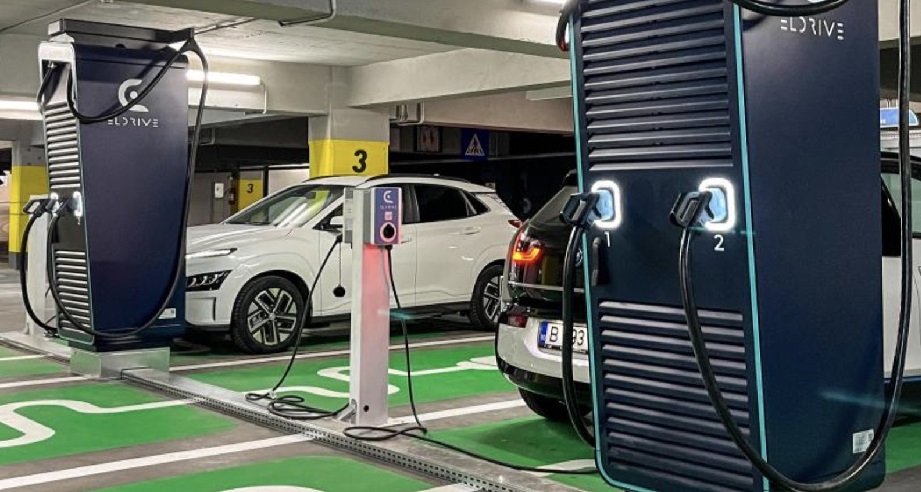The European Alternative Fuels Observatory (EAFO) published its analysis of trends in the installation of electric vehicle (EV) charging devices across Europe in the first quarter of 2024.
The purpose of this report is to gather data revealing various patterns in the distribution and power of electric vehicles (EV) charging points, highlighting areas of excellence and opportunities for improvement.
Surprisingly, the document identifies nations located in Eastern Europe as the leaders in high-power chargers, among which it mentions Bulgaria, Estonia, and Latvia.
While these countries have fewer charging points overall, they demonstrate greater efficiency in distributing resources, meaning a solid infrastructure relative to the number of charging stations.
The locations have 2,218, 560, and 698 devices, both alternating current (AC) and direct current (DC), respectively.
Again, while not significant in number, it’s the intensity of their equipment that makes the difference: Bulgaria with a total charging potential of 111,870 kilowatts, Estonia with 29,014 kilowatts, and Latvia with 29,718 kilowatts.

Subsequently, the report places territories in Central and Oriental Europe, particularly Slovakia, Croatia, and the Czech Republic, as possessors of significant charging power per point, forming a group of countries investing in high-capacity charging equipment.
On the other hand, the western fraction of the old continent presents a balanced scheme regarding the adoption of electric cars.
Nations like the Netherlands, Germany, and France have developed an extensive network of stations, ensuring accessibility and convenience for users.
While the charging power per point may be considered moderate, this broad system allows for the support of a large fleet of electric vehicles.
Similarly, in the south, Spain, Italy, and Greece are emerging as new players in the development of electromobility charging.
Although their charging power per point is lower compared to Eastern Europe, there is a constant growth in the number of chargers, indicating ongoing investment and expansion in this region.
In the Nordic region, Norway and Finland, known for their high adoption rates of zero-emission vehicles, are continuously expanding their infrastructure.
While their charging power per vehicle may be lower, the overall increase in charging points reflects efforts to meet the growing demand for electric cars.
However, there are states in the western territory still facing challenges in terms of this issue.
Ireland, Malta, and Cyprus, for example, have significant potential but currently lack promoted structures.
These regions exhibit low charging power per vehicle, highlighting the urgent need for accelerated investment and development to support the future adoption of EVs in these countries.
What solutions are being proposed?
Firstly, from a strategic perspective, the leading countries on the list demonstrate the effectiveness of their focus on high-power charging devices.
This planning proves to be a beneficial option for regions with lower adoption of electric vehicles but demands quick and efficient solutions.
On another note, in the western section, the need for a widespread network to support an expanding fleet of electric cars is emphasized.
This approach ensures accessibility and convenience, crucial elements for fostering greater adoption of zero-emission vehicles in the area.
Regarding emerging countries, both in southern Europe and the Nordic regions, it is imperative to maintain and intensify funding to reach the level of progress of the leaders in this field.
The constant addition of hubs and the increase in power capacity will be crucial to support the growth of electric cars on the roads in these areas.
Lastly, underdeveloped states like Ireland and Malta need specific and accelerated grants to rapidly expand their infrastructure.
This would ensure they are prepared to meet the anticipated growing demand in EV adoption, aligning with the pace of evolution of the industry globally.

A significant point to note is that the European Automobile Manufacturers’ Association (ACEA) determined in a recent statement that overall, the European Union (EU) needs eight times more charging equipment annually by 2030 to meet CO2 targets.
This is underscored by the fact that electric car sales in the EU grew three times faster than the installation of charging points between 2017 and 2023, as shown in the ACEA report.
“We need a massive adoption of electric cars in all EU countries to achieve Europe’s ambitious CO2 reduction targets. This will not happen without widespread availability of public charging infrastructure throughout the region,” stated Sigrid de Vries, the organization’s Director General.









